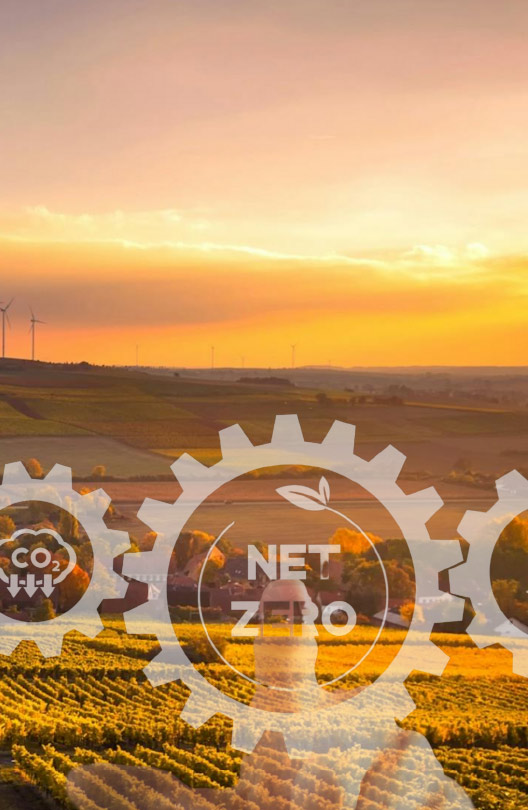THIS ARTICLE AT A GLANCE
CONTACT ETS
If you have any questions or would like to discuss further what you should be doing, ETS is here and willing to help.
Call 0117 205 0542
Email enquiries@energy-ts.com
Submit a contact form
CHECK OUR SERVICES
Energy Management Software: Benefits and Limitations

Introduction

Energy Management Expert Phil Warren
As energy costs continue to rise and the levels of statutory obligations related to emissions and climate change increase, effective energy management has become a challenge for many organisations. One of the most common issues companies face, is choosing the right energy management system to support their business objectives. Many companies will rely on their energy broker to intervene and find an appropriate solution for them, but many won’t know all the options available.
There is a full spectrum of energy management solutions available on the market and when making a choice, it is important to understand how the capabilities of these systems match the company’s needs. However, whilst Energy Management software programmes are extremely useful tools, they have their limitations. Our Managing Director, Phil Warren, discusses this in more detail.
Energy Management Software is a great support to energy efficiency. There are many proprietary systems on the market ready to be brought off the shelf, so you can purchase the license modules you need, hook up the connections and data feeds then away you go. However, the software is only a tool that should be used skillfully to obtain the best results; to do this, you need to be proactive with it, if you are passive – results will pass you by.
Benefits of Energy Management Software: More Effective Use of Resources
Energy Management software programmes can collate all of your building systems energy data into a single application. HVAC, Lighting, Security Systems and other plant equipment can all be included within the system presenting it in a visual dashboard. This allows energy users to view a buildings energy use and gain insight into the energy consumption of each system.
Limitations
Whilst this is very helpful, it doesn’t take into account weather data, the quality of your data streams (controls and sensors), your facility, the condition of the plant equipment and building design. Many of the solutions available on the market will only provide tools to report on energy consumption, with very little consideration given to the end user who then faces the challenge of making sense of the energy data presented to translate it into actionable energy saving opportunities; this is where we differ. Our Technical Energy Centre (TEC) team not only reports on energy consumption but also provides guidance and expertise to make improvements to operational inefficiencies.
In my opinion, software should be viewed as a tool, very clever and able, but a tool nonetheless. You will go to a mechanic you trust because they are good at what they do, you do not care what type of spanners or diagnostic equipment he uses, it’s his knowledge that you buy.
The same applies to energy management software, you need to trust the analysis of the energy data presented. This trust is built through the analyst understanding the data streams, your facility and the equipment that is consuming the energy. Only then can meaningful and lasting interventions be made to reduce consumption.
Benefit: Reduced Energy Consumption
The main purpose of an energy management system is to improve energy efficiency. Energy data is collated for the various components within the building and converted into reports, graphs and charts to show energy use changes over time. All this information allows the end user to make operational changes within their building to reduce energy consumption.
Limitations
Whilst this is very effective in reducing energy consumption, it relies on the end user interpreting the data correctly to make adjustments to controls and understanding the causes of operational inefficiencies. Our Operations Director, Phil Bilyard, discusses how to improve operational efficiency in more detail here.
Artificial Intelligence is making massive progress in the built environment through the amount of data that can be accessed, however, in my view the data and independent variables need regular review by a trained professional / expert to ensure the facility is being controlled as efficiently as possible. Our TEC team explain how it is possible to save thousands through this approach to energy management.
Final thoughts
If you are looking for an energy management system that is tailored to your business needs, ETS can provide you with 25 years of experience in dramatically improving energy efficiency and reducing environmental impacts. Whether your businesses have individual assets or large international portfolios, ETS can assist you in saving substantial amounts of money while significantly reducing your carbon performance.
To discuss your requirements, get in touch. You can contact us by calling 0117 205 0542 or drop us an email at enquiries@energy-ts.com.
Introduction

Energy Management Expert Phil Warren
As energy costs continue to rise and the levels of statutory obligations related to emissions and climate change increase, effective energy management has become a challenge for many organisations. One of the most common issues companies face, is choosing the right energy management system to support their business objectives. Many companies will rely on their energy broker to intervene and find an appropriate solution for them, but many won’t know all the options available.
There is a full spectrum of energy management solutions available on the market and when making a choice, it is important to understand how the capabilities of these systems match the company’s needs. However, whilst Energy Management software programmes are extremely useful tools, they have their limitations. Our Managing Director, Phil Warren, discusses this in more detail.
Energy Management Software is a great support to energy efficiency. There are many proprietary systems on the market ready to be brought off the shelf, so you can purchase the license modules you need, hook up the connections and data feeds then away you go. However, the software is only a tool that should be used skillfully to obtain the best results; to do this, you need to be proactive with it, if you are passive – results will pass you by.
More Effective Use of Resources
Energy Management software programmes can collate all of your building systems energy data into a single application. HVAC, Lighting, Security Systems and other plant equipment can all be included within the system presenting it in a visual dashboard. This allows energy users to view a buildings energy use and gain insight into the energy consumption of each system.
Whilst this is very helpful, it doesn’t take into account weather data, the quality of your data streams (controls and sensors), your facility, the condition of the plant equipment and building design. Many of the solutions available on the market will only provide tools to report on energy consumption, with very little consideration given to the end user who then faces the challenge of making sense of the energy data presented to translate it into actionable energy saving opportunities; this is where we differ. Our Technical Energy Centre (TEC) team not only reports on energy consumption but also provides guidance and expertise to make improvements to operational inefficiencies.
In my opinion, software should be viewed as a tool, very clever and able, but a tool nonetheless. You will go to a mechanic you trust because they are good at what they do, you do not care what type of spanners or diagnostic equipment he uses, it’s his knowledge that you buy.
The same applies to energy management software, you need to trust the analysis of the energy data presented. This trust is built through the analyst understanding the data streams, your facility and the equipment that is consuming the energy. Only then can meaningful and lasting interventions be made to reduce consumption.
Reduced Energy Consumption
The main purpose of an energy management system is to improve energy efficiency. Energy data is collated for the various components within the building and converted into reports, graphs and charts to show energy use changes over time. All this information allows the end user to make operational changes within their building to reduce energy consumption. Whilst this is very effective in reducing energy consumption, it relies on the end user interpreting the data correctly to make adjustments to controls and understanding the causes of operational inefficiencies. Our Operations Director, Phil Bilyard, discusses how to improve operational efficiency in more detail here.
Artificial Intelligence is making massive progress in the built environment through the amount of data that can be accessed, however, in my view the data and independent variables need regular review by a trained professional / expert to ensure the facility is being controlled as efficiently as possible. Our TEC team explain how it is possible to save thousands through this approach to energy management.
If you would like to learn more about our TEC service, please call us on 0117 379 0850 or email enquiries@energy-ts.com
Related Article
8 Ways Businesses Can Reduce Energy Use in the Workplace This Winter
Discover how to comply with ESOS Phase 4 and unlock energy-saving opportunities for your business. This guide explains the requirements, highlights key deadlines, and provides actionable strategies. Learn how energy audits, tailored action plans, and expert support can reduce costs, improve efficiency, and align your organisation with sustainability goals.
ESOS Action Planning: Complying with Phase 4 and Implementing Energy Saving Strategies
Discover how to comply with ESOS Phase 4 and unlock energy-saving opportunities for your business. This guide explains the requirements, highlights key deadlines, and provides actionable strategies. Learn how energy audits, tailored action plans, and expert support can reduce costs, improve efficiency, and align your organisation with sustainability goals.
Important Update: What You Need to Know about ESOS Phase 3
Time is ticking for the ESOS Phase 3 deadline. The Environment Agency announced that the reporting system is available now. For organisations qualifying for ESOS Phase 3, the deadline for submitting a compliance notification is 5 June 2024, and organisations should still look to meet this compliance notification deadline where possible.









































































